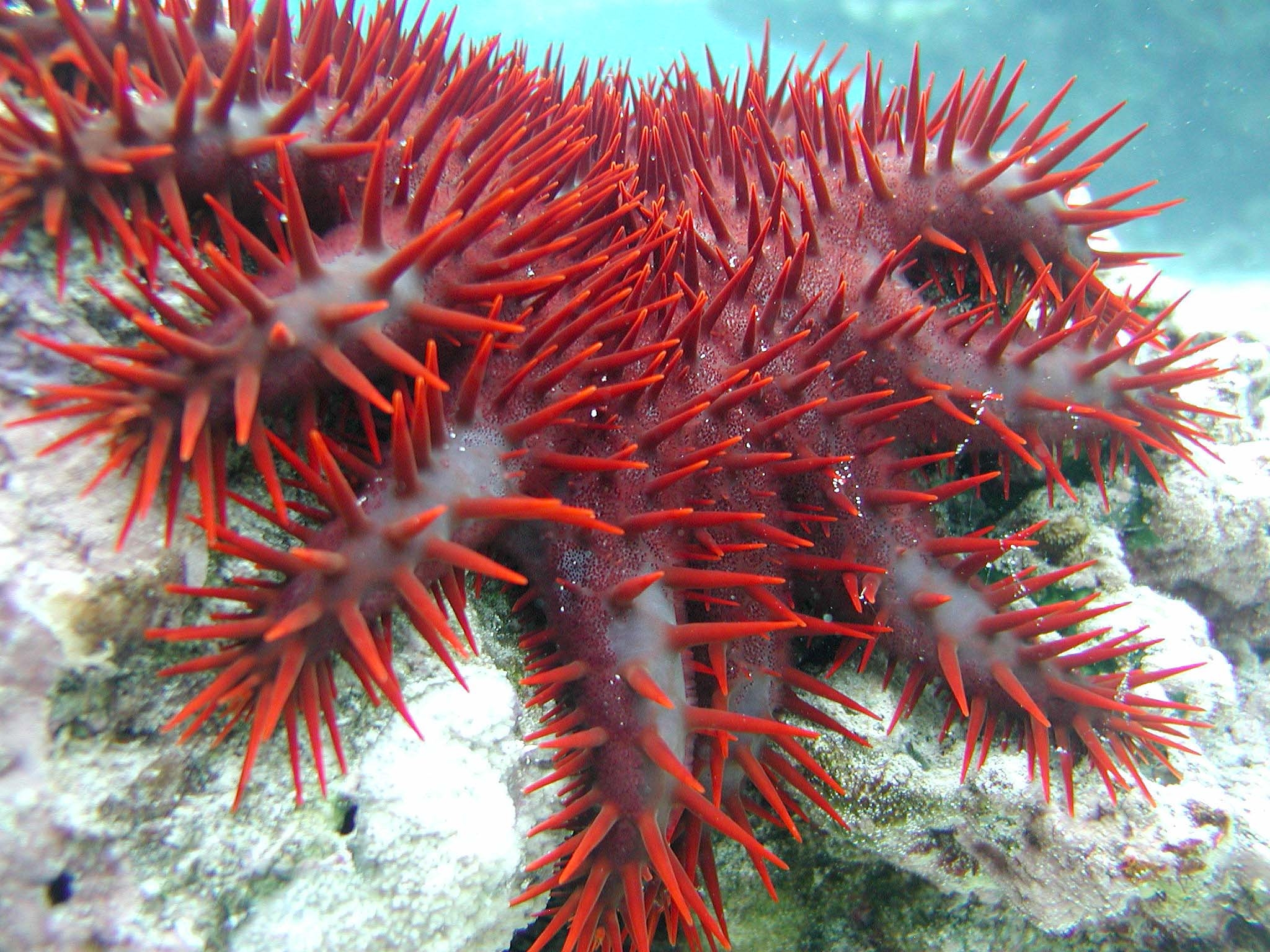News Release
You are viewing ARCHIVED content published online before January 20, 2025.
Please note that this content is NOT UPDATED, and links may not work. For current information,
visit https://www.nps.gov/aboutus/news/index.htm.

NPS Photo
|
Subscribe
|
Contact: Michael Larson, 684 633-7082 ext 20
PAGO PAGO, American Samoa — The National Park Service killed 6,433 crown of thorns starfish over three weeks in an effort to protect the territories coral reefs. Known as alamea in Samoan, the starfish can quickly consume a coral reef, leaving a field of coral skeletons in its wake. Outbreak levels of starfish were first observed by national park staff in 2011, but this is the first time the outbreak has been thoroughly monitored and control efforts initiated. National park divers are killing the alamea by injecting them with sodium bisulfate, a common chemical used to balance swimming pool pH levels. While toxic to alamea when injected, the chemical is harmless to people or other marine life.Large numbers of these starfish can decimate a reef as they did in the late 1970’s and early 1980’s when over 80% of the coral was lost on Tutuila. Dives over the last three weeks showed the loss of almost all of the coral on Taema Bank, outside of Fagasa, and in parts of Fagamalo. The Taema Bank corals have been so severely damaged that it was deemed not to be worth the team’s effort to remove the remaining starfish.
“There is complete devastation of the reefs wherever an outbreak occurs. If this continues, it is likely we will lose most of the territories reefs” according to Marine Ecologist Dr. Tim Clark.
The National Park of American Samoa has been working hard to try and control the alamea populations. Nine National Park Service divers arrived in November to help local park staff. The divers are all a part of the National Park’s Submerged Resources Center (SRC), a group of marine archeologist who travel the world studying and preserving ancient shipwrecks. The park has cleared reef in Fagasa, Fagamalo, and has partially cleared reefs in front of Maliu Mai and Vaitogi.
Despite the successes in Fagasa and Fagamalo, it’s not enough. The most recent dives in Fagamalo show that new infestations are taking over other areas of the reef, starting at the bottom of the reef slope and working their way into the shallows. Aloau, Massacre Bay, and the area from the Pala lagoon to Vaitogi also have infestations killing off the reefs.
The loss of coral reefs to alamea could be devastating. Coral reefs can take 50 years to recover from alamea infestations, and continued disturbances like the tsunami and cyclones increase the time to recovery even more. The reefs are what protect our island from storms, provide fish and other marine life as food, and provide a place for us to swim and enjoy nature. Without a healthy reef, the islands and the people of American Samoa suffer.
What has caused this outbreak? There is reason to believe that it is due to high nutrient levels near shore. A single alamea can produce over 60 million eggs each year, but most of these die because they don’t have enough food to survive as larvae. Alamea larvae feed on phytoplankton, a marine plant, and like plants on land, the phytoplankton needs nutrients to survive. High levels of nutrients near shore is caused by a variety of sources including marine litter, leaking septic tanks, illegal piggeries, excessive fertilizer on crops and fields, and the release of untreated sewage. These nutrients cause phytoplankton blooms like the red tide that has recently been visible in Pago Pago Harbor and allow many of the alamea’s 60 million eggs to survive and settle on our reefs. Storms or events like the tsunami may also be a factor since they stir up all the nutrients that have settled in bottom waters over time.
It is likely that the current alamea outbreak started in 2011, when high levels of alamea were first seen on Taema Bank and the airport reef. It takes three years for an alamea to reach maturity and start feeding on corals, so we may be seeing the start of a secondary outbreak. This is similar to what happened in the 1970/1980 outbreak where a primary outbreak seeded a much larger and island wide secondary outbreak. If that is the case, then we stand to once again lose 80-90% of the island’s reefs.
While over 6,000 alamea have been cleared from the reef, many more are still out there. Help is needed from local and federal agencies, fishermen, and villages to kill the alamea and get the outbreak under control. The Department of Marine and Wildlife Resources (DMWR) is busy training villagers and fishermen on how to safely remove alamea from the reef. Remember that the starfish are poisonous, so special care is needed when they are handled. Location of alamea outbreaks should also be reported to DMWR so that they can continue to monitor the outbreak and help villages with removal efforts. Park staff will continue to collaborate with DMWR, the National Marine Sanctuary of American Samoa, and local villages to monitor and eradicate any additional alamea that are found. This outbreak is a threat to the island, but with everyone’s help, the damage to our precious marine life can be minimized.
-- NPS --
Last updated: March 19, 2018
